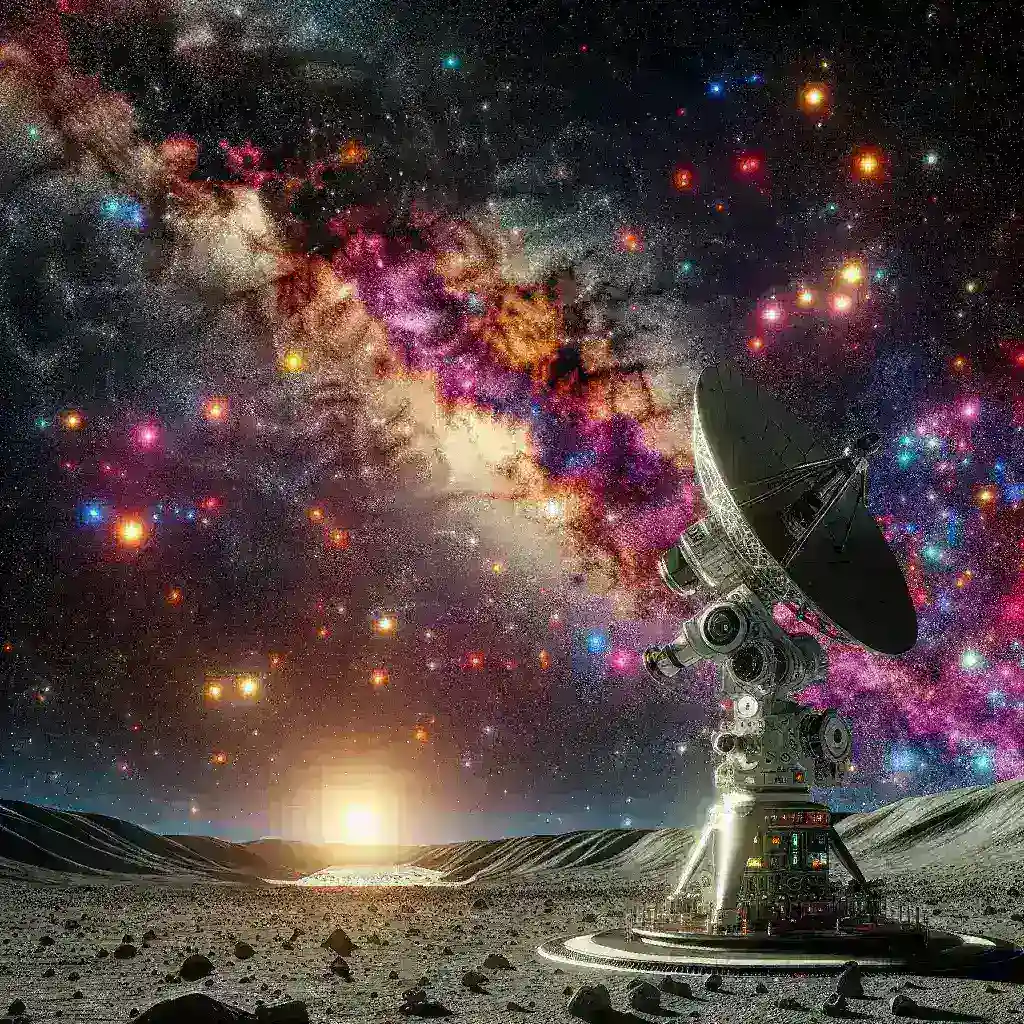Introduction
The quest for extraterrestrial life has captivated humanity for centuries. As we stand on the precipice of technological advances, robotic AI-powered telescopes are emerging as key tools in our search for signs of alien civilizations. These advanced devices are not just tools; they represent a synergy of artificial intelligence and astronomical research, enabling us to scan the cosmos for technosignatures—indicators of intelligent life beyond Earth.
The Significance of Technosignatures
Technosignatures can be defined as evidence of advanced technologies that extraterrestrial civilizations might produce. They differ from traditional biosignatures, which focus on life as we know it. The search for technosignatures is critical because it expands the parameters of how we define life and the technological markers that could indicate the presence of intelligent beings in the universe.
Types of Technosignatures
- Radio Signals: Intentional or unintentional radio frequencies emitted by advanced civilizations can be detected from vast distances.
- Optical Signals: Powerful lasers or other optical phenomena could signify advanced technological capabilities.
- Megastructures: Large-scale structures such as Dyson spheres, which could be built around stars to harness energy, are potential indicators of advanced civilizations.
Historical Context
The Search Begins
The serious scientific pursuit of extraterrestrial signals began in the 1960s with projects like the Search for Extraterrestrial Intelligence (SETI). Early efforts were rudimentary, limited by the technology of the time. Researchers used simple radio telescopes to scan the cosmos for unusual signals. However, these initial endeavors lacked the computational power and efficiency needed to process vast amounts of data.
The Role of AI
Fast forward to today, and the integration of artificial intelligence into astronomical research has transformed our capabilities. AI enables robotic telescopes to analyze data much more efficiently than human researchers could. Machine learning algorithms can identify patterns and anomalies in cosmic data, filtering out the noise and focusing on potential signals that may indicate technosignatures.
Robotic AI-Powered Telescopes: A New Frontier
How They Work
Robotic telescopes equipped with AI utilize sophisticated algorithms to execute tasks autonomously. They can monitor multiple celestial bodies simultaneously, adjusting their observations based on real-time data analysis. This adaptability allows scientists to prioritize targets that warrant further investigation.
Key Features
- Automated Tracking: These telescopes can track celestial objects without human intervention, ensuring that no potential technosignature goes unnoticed.
- Data Processing: AI algorithms process data in real-time, identifying signals that deviate from expected cosmic background noise.
- Remote Operation: Robotic telescopes can be operated from anywhere in the world, making them accessible for use by researchers globally.
Case Studies: Real-World Applications
Breakthrough Listen Initiative
The Breakthrough Listen Initiative represents one of the most ambitious efforts to search for technosignatures. Utilizing the Parkes Observatory in Australia and the Green Bank Telescope in West Virginia, this initiative employs advanced AI algorithms to analyze vast datasets. In a recent study, the initiative detected unexplained signals, sparking discussions about the possibility of extraterrestrial sources.
NASA’s Transiting Exoplanet Survey Satellite (TESS)
TESS is another example of how robotic telescopes are revolutionizing our understanding of the cosmos. While primarily focused on discovering exoplanets, TESS’s observations contribute to the broader search for technosignatures by identifying planets that may harbor life.
Pros and Cons of Robotic AI-Powered Telescopes
Advantages
- Efficiency: AI enhances the speed and accuracy of data analysis, allowing for rapid identification of potential signals.
- Scalability: Robotic telescopes can be deployed in numerous locations, increasing the overall surveillance of the sky.
- Reduced Human Error: Automation minimizes the chances of oversight, ensuring that no potential discoveries are missed.
Challenges
- Data Overload: The vast amount of data generated can overwhelm processing systems if not managed effectively.
- False Positives: AI systems may occasionally misinterpret signals, leading to potentially misleading conclusions.
- Ethical Considerations: The implications of discovering extraterrestrial life raise ethical questions that society must address.
The Future of the Search
As technology continues to evolve, the future of robotic AI-powered telescopes looks promising. Upcoming projects, like the Extremely Large Telescope (ELT) and the James Webb Space Telescope (JWST), will incorporate advanced AI capabilities to enhance their search for technosignatures. These projects will not only expand our understanding of the universe but may also bring us closer to answering one of humanity’s most profound questions: Are we alone in the cosmos?
Conclusion
Robotic AI-powered telescopes are at the forefront of the search for technosignatures of alien civilizations. Their ability to autonomously gather and analyze data marks a significant advancement in our quest to understand the universe. As these technologies develop, we stand on the edge of a new era in astronomy, where the detection of signs of extraterrestrial life may one day be within our grasp. The universe holds countless mysteries, and with every observation, we take a step closer to unraveling them.

